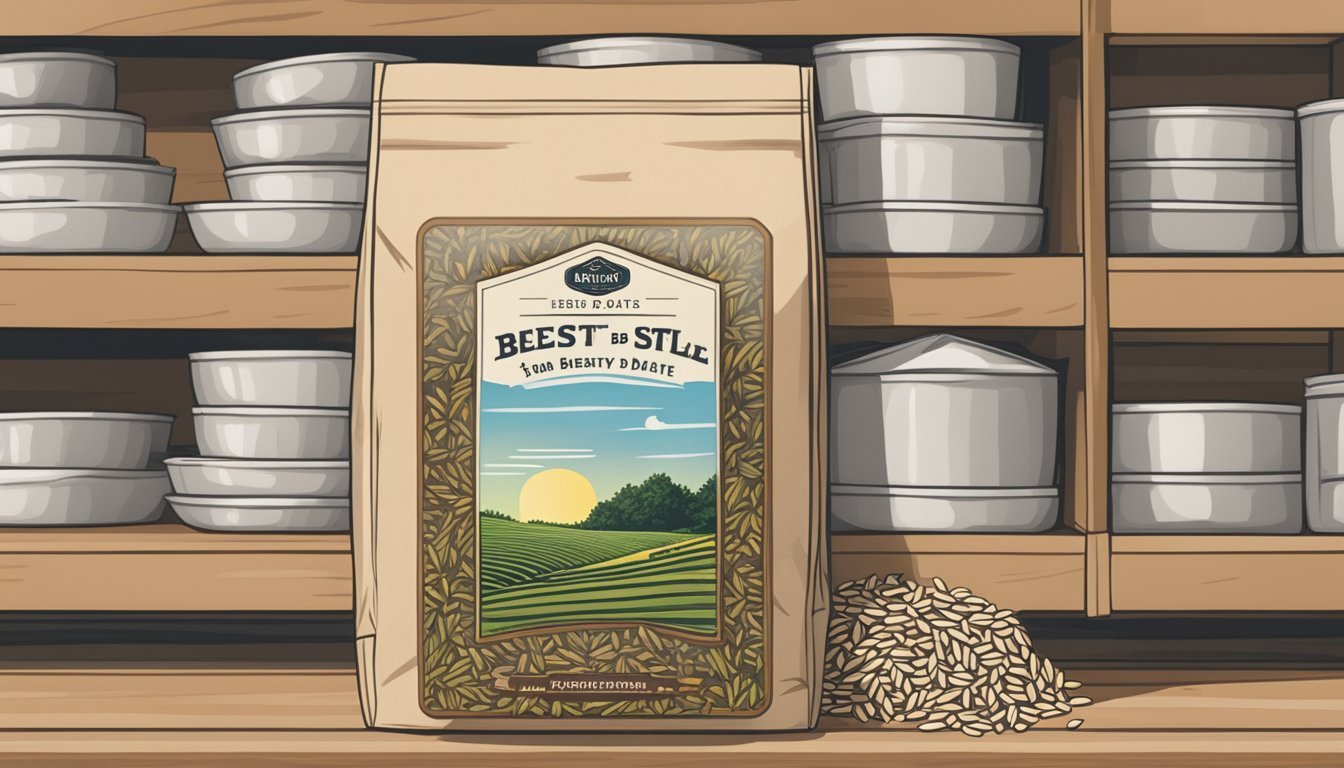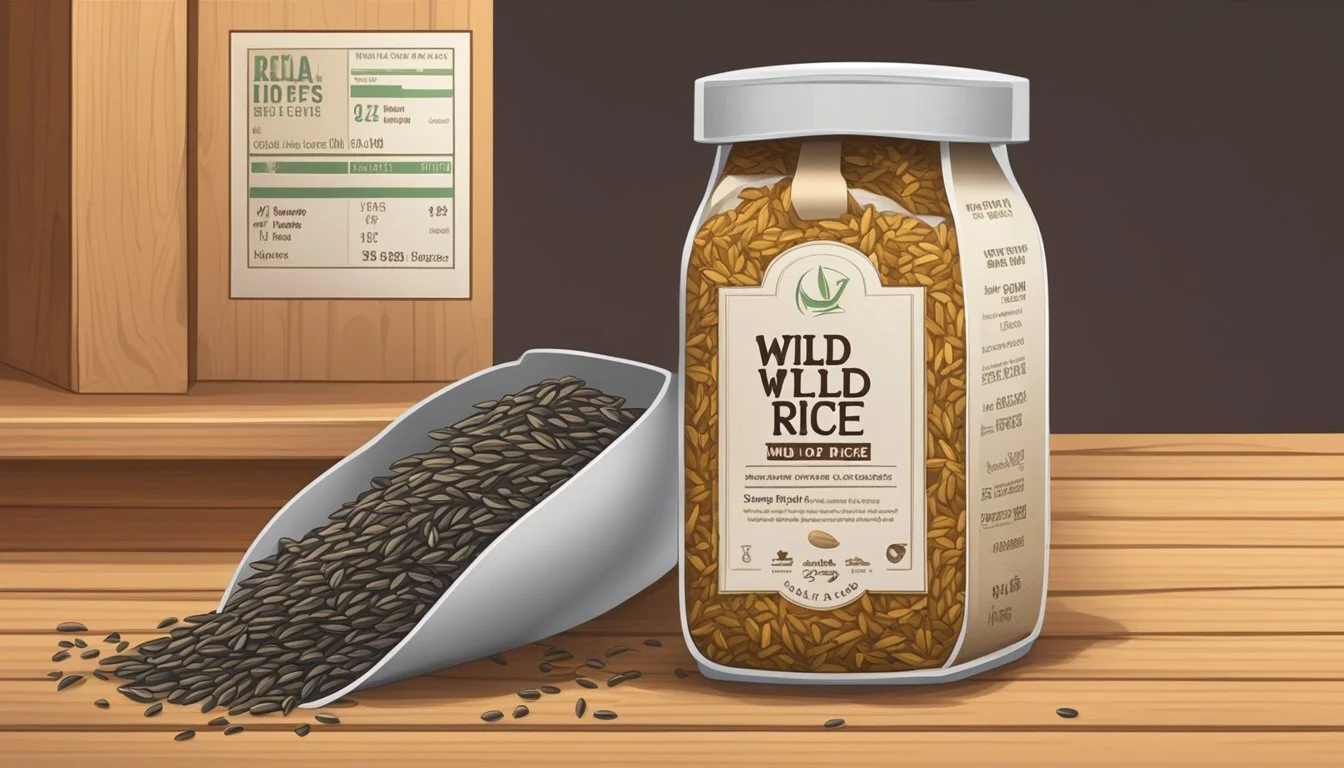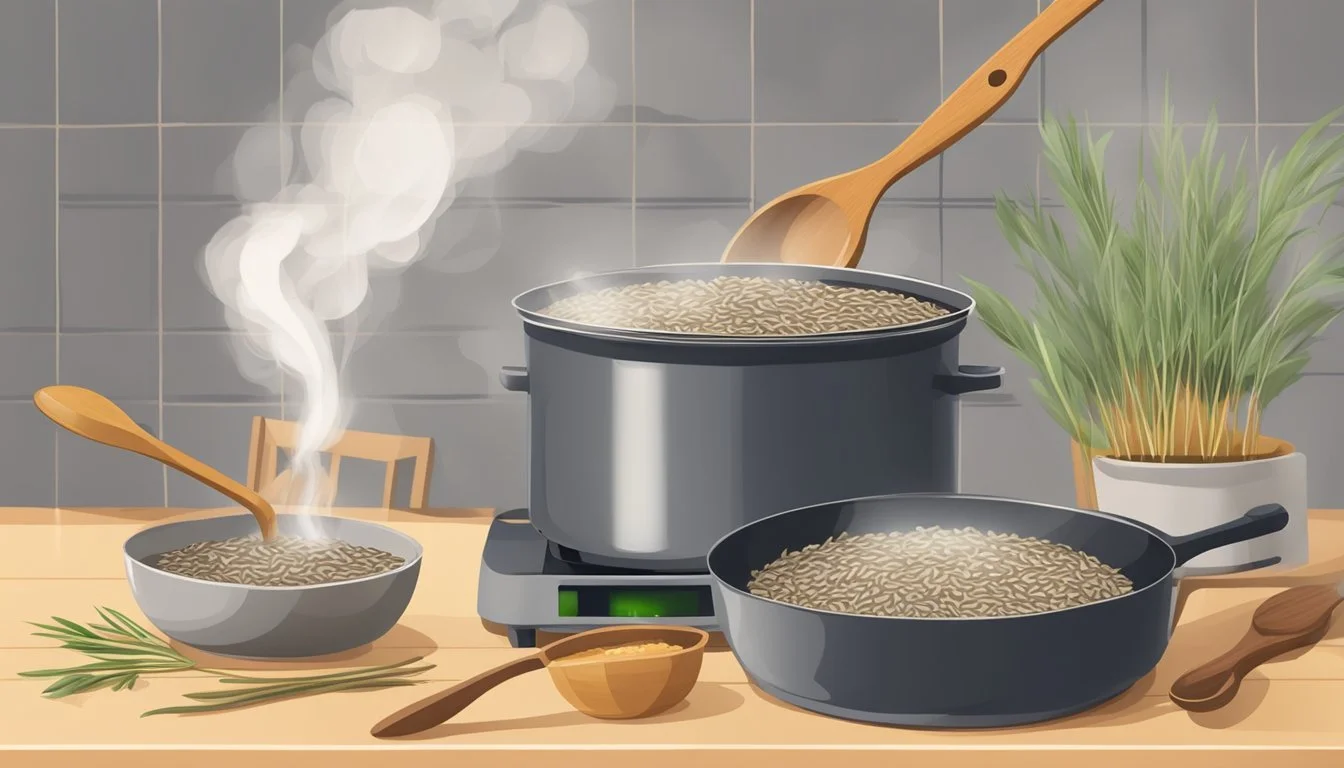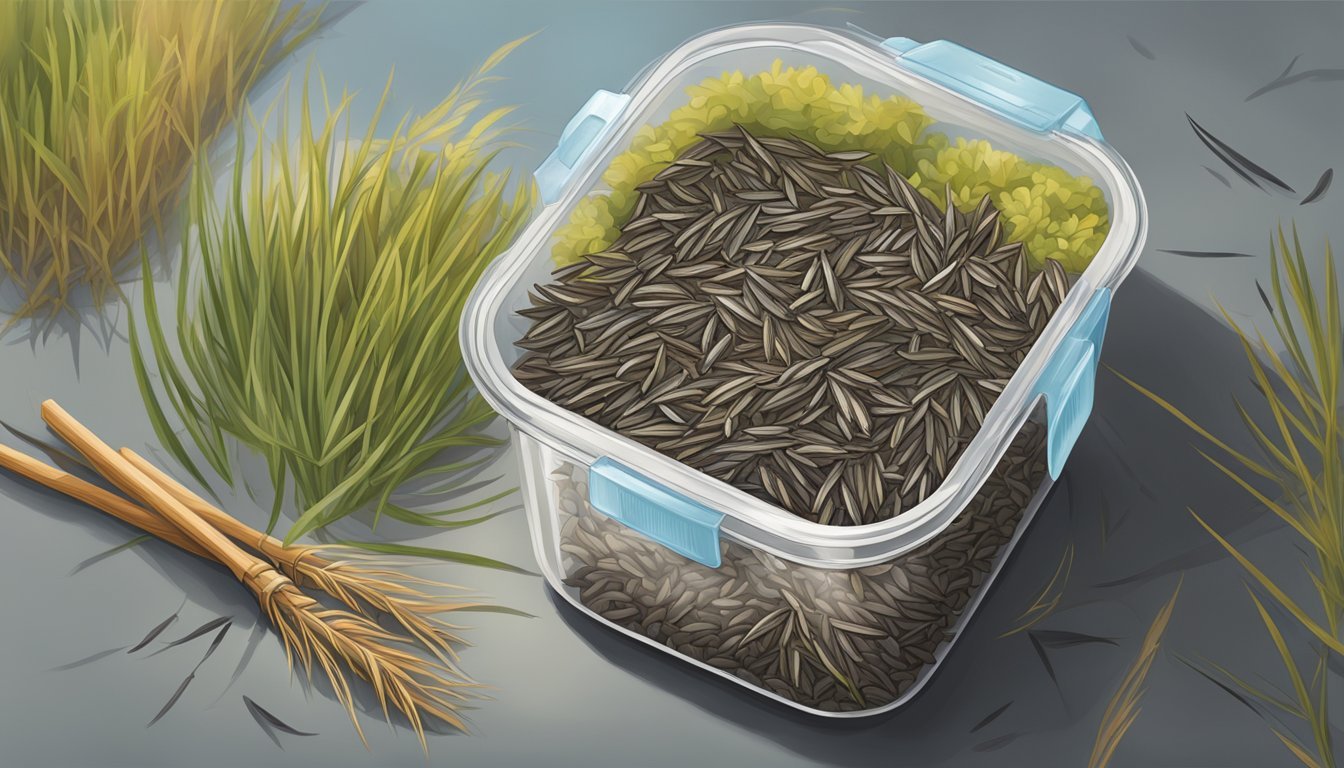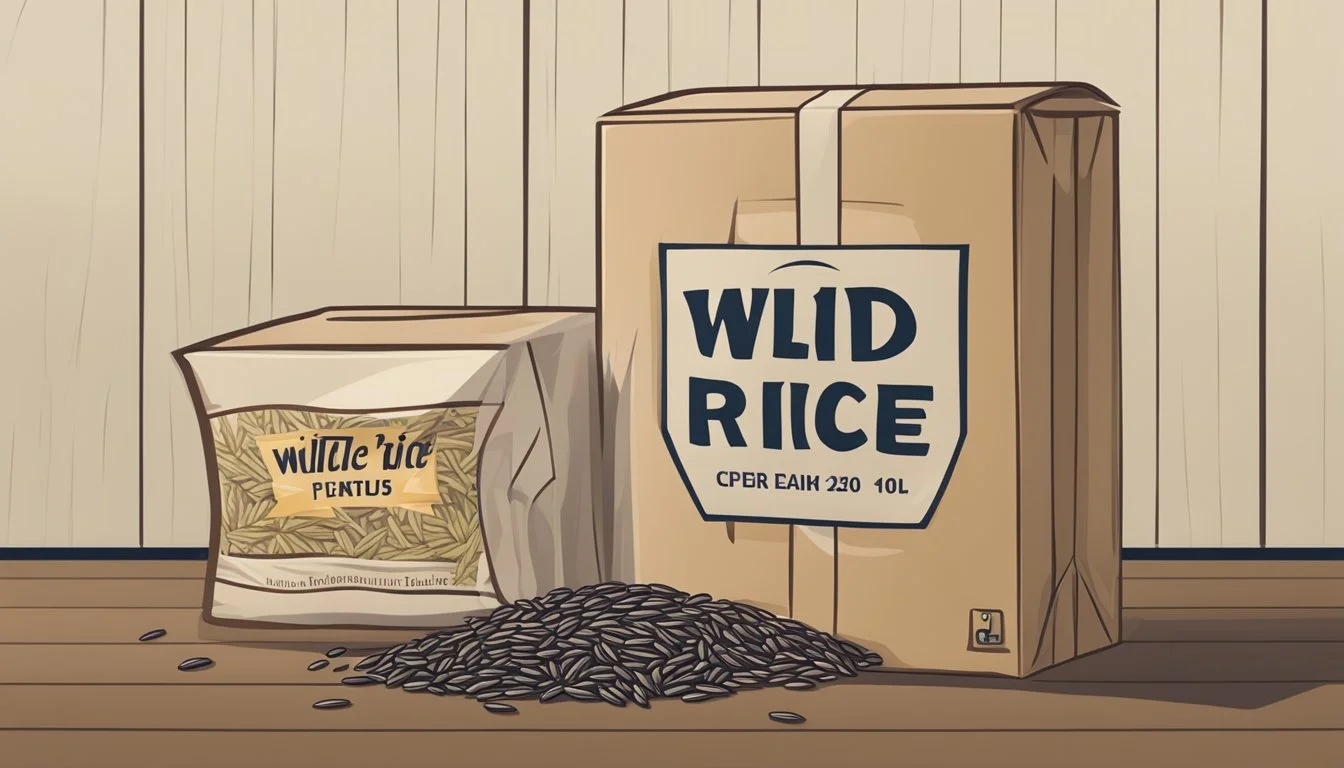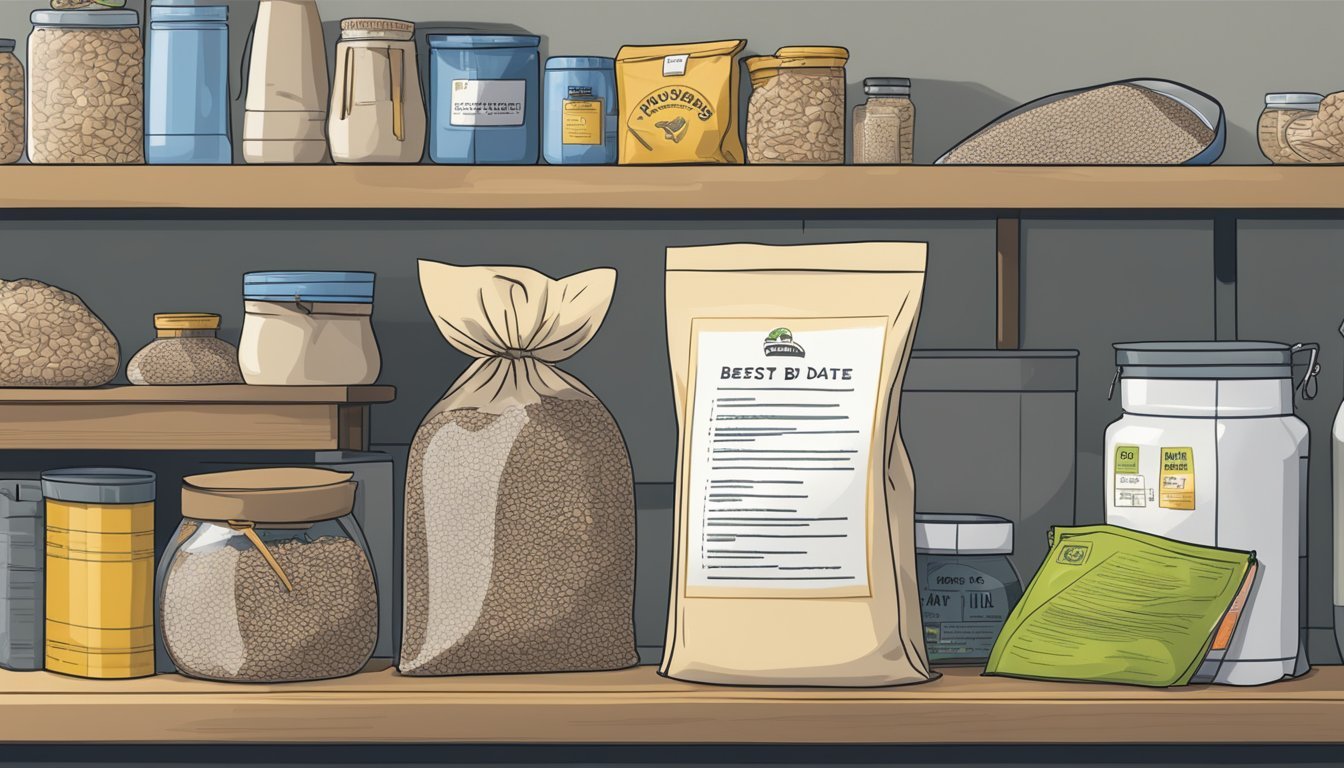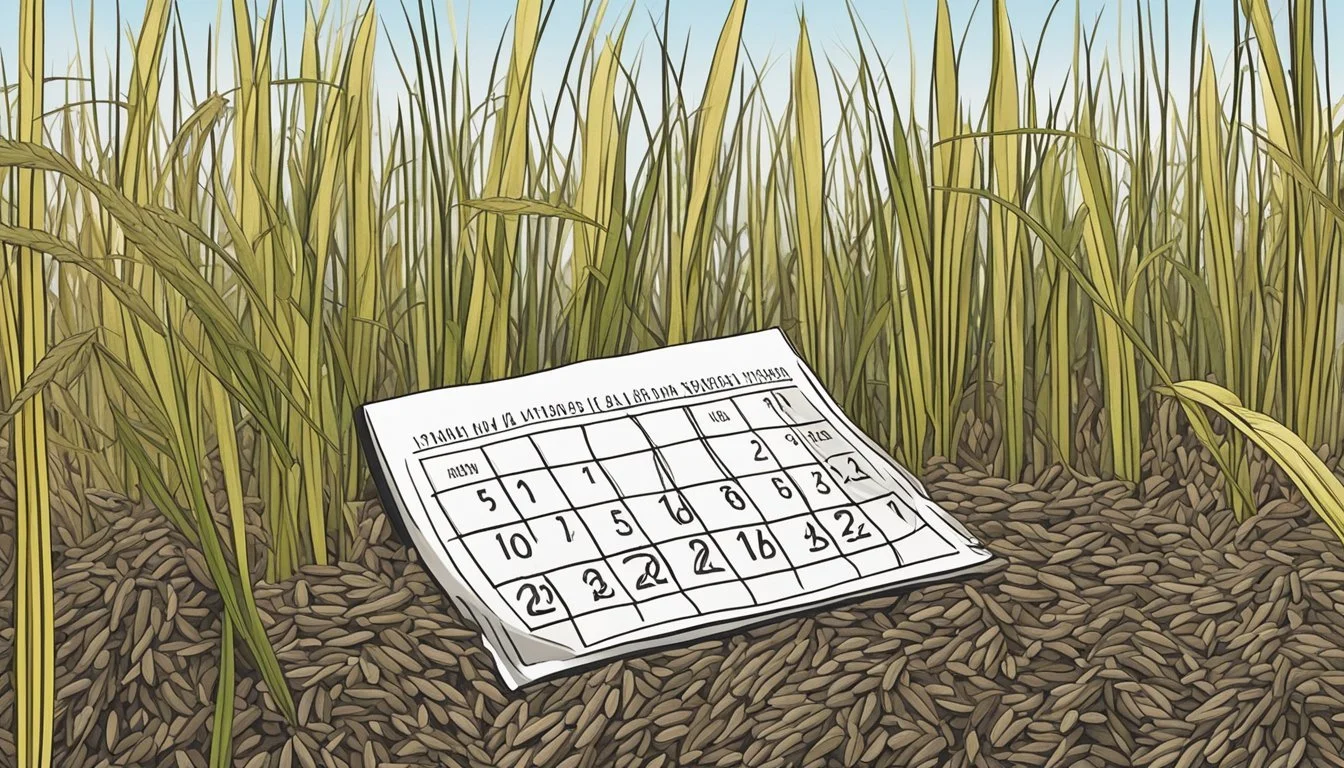How Long Does Wild Rice Last?
Shelf Life and Storage Tips
Uncooked wild rice (how long does wild rice last?), a highly nutritious grain, is known for its impressive shelf life compared to other types of rice (What wine goes well with rice?). Properly storing wild rice is key to preserving its quality and extending its longevity. It has a naturally robust character that allows it to keep well when conditions are optimal.
When stored in a cool, dry place, uncooked wild rice keeps for up to 12 months without losing its quality. Over time, improperly stored wild rice can become rancid, developing an unpleasant odor and taste which can render it unfit for consumption. Observing proper storage methods is crucial to maintain the grain's freshness and edibility.
Understanding Wild Rice
In grasping the essence of wild rice, one must recognize it as both a unique grain and a nutritious staple. Its longevity and distinct characteristics set it apart from its common rice counterparts.
What Is Wild Rice?
Wild rice is not related to the typical white or brown rice varieties. Instead, it's an aquatic grass seed native to the lakes of North America, traditionally harvested by Indigenous peoples. Categorized as a whole grain, wild rice bears a strong, nutty flavor and a chewy texture, distinguishing it from other grains. It's lauded for its adaptability, serving as a culinary staple that fits within a vast array of diets.
Nutritional Profile of Wild Rice
The nutritional composition of wild rice is impressive, boasting a rich content of protein, fiber, and essential vitamins and minerals. It is particularly high in magnesium, iron, and zinc, making it a valuable inclusion in a health-conscious diet.
Nutrient Benefit Protein Essential for muscle repair and growth Fiber Aids digestion and satiety Magnesium Supports nerve function and metabolism Iron Critical for oxygen transport in blood Zinc Vital for immune system function
When considering wild rice's profile, it's clear that its contributions to a diet extend beyond mere sustenance, offering an array of nutrients beneficial for maintaining overall health.
Storage Basics
Proper storage is crucial to maximizing the shelf life of wild rice. It entails maintaining rice in a condition that prevents spoilage and preserves quality over time.
Proper Storage Conditions
Wild rice thrives in a cool, dry place—conditions that limit the potential for mold and other spoilage factors. A pantry is typically the ideal environment, offering a stable temperature away from direct sunlight and heat sources. If wild rice is stored in a refrigerator, it can last for up to 6 months. For longer preservation, freezing is a viable option, effectively extending the wild rice's freshness.
Choosing the Right Containers
Label Description Airtight Containers Crucial for preventing moisture and contaminants. Refrigerator Storage Ideal for cooked wild rice to maintain freshness. Freezer Friendly Suitable for long-term storage, ensuring rice doesn't absorb other odors.
For wild rice, the selection of containers is a significant determinant of its longevity. Employing airtight containers is non-negotiable to foreswear moisture and external odors that could diminish the rice's quality. Whether in the pantry, fridge, or freezer, these containers ensure a sealed environment, mitigating the risk of spoilage and prolonging the utility of the wild rice.
Shelf Life of Wild Rice
The shelf life of wild rice varies significantly depending on whether it is uncooked or cooked. Proper storage is essential to maximize longevity and maintain quality.
Uncooked Wild Rice
Uncooked wild rice, when stored in a cool, dry place, can last for up to 12 months. This shelf life ensures that it remains a staple ingredient that can be stored in bulk. To preserve its freshness and prevent it from becoming rancid, one should adhere to the following storage tips:
Keep the rice in an airtight container to protect it from moisture and contaminants.
Store the container in a location free from drastic temperature changes, which could affect the rice's quality.
Cooked Wild Rice
Once wild rice is cooked, the shelf life shortens considerably. Cooked wild rice should be stored in the refrigerator and is best if consumed within 4-6 days. To extend the life of cooked wild rice, freezing is an option:
In the freezer, cooked wild rice can last for approximately 6 months.
It should be stored in airtight containers or heavy-duty freezer bags to prevent freezer burn.
It's important to note that cooked wild rice must be cooled completely before refrigerating or freezing to maintain its quality. If the wild rice develops an unusual odor, flavor, or appearance, or if any signs of contamination appear, it should be discarded immediately.
Preparing and Cooking
When cooking wild rice, it's crucial to start with proper preparation and use the right techniques to ensure the rice is cooked correctly. This not only enhances the flavor but also ensures the rice can last longer when stored properly.
How to Cook Wild Rice
To cook wild rice on the stovetop, one should begin by rinsing the grains under cold running water using a fine-mesh strainer to remove any debris. They should then add the rice to a medium-sized pot along with liquid—typically water or broth—in a 1:3 ratio of rice to liquid. One brings the pot to a boil, then reduces the heat to low, covers the pot, and allows the rice to simmer for about 45 minutes, stirring occasionally. Cooking times may vary, so it is recommended to taste the rice and check for a chewy texture, ensuring that some grains have burst open. Once cooked, the rice should be drained of any excess liquid in a strainer.
Wild Rice in Recipes
Wild rice adds a robust flavor and texture to a variety of recipes. It can be incorporated into salads, soups, and casseroles, imparting a nutty taste and chewiness that contrasts with other ingredients. When using wild rice in recipes, one should consider its longer cooking time compared to other rice varieties. If a dish requires baking in the oven or cooking in the microwave, wild rice should generally be cooked beforehand to ensure it's tender. As a versatile side dish, wild rice may be flavored with herbs and spices or combined with vegetables and nuts to enhance its natural character.
Freezing and Reheating
Freezing cooked wild rice properly extends its shelf life significantly, and reheating it correctly ensures that the rice retains its quality.
How to Freeze Wild Rice
To freeze cooked wild rice, one should cool the rice completely before packaging to minimize the risk of bacterial growth. Portioning the rice into usable servings is recommended before securing it in heavy-duty freezer bags or airtight containers. Pressing out excess air is crucial to prevent freezer burn. Properly stored, cooked wild rice can be kept frozen for up to six months.
Cool cooked wild rice to room temperature.
Portion the rice into desired serving sizes.
Transfer to heavy-duty freezer bags or airtight containers.
Press out excess air from freezer bags if used.
Label with date and contents before placing in the freezer.
Reheating Frozen Wild Rice
When reheating frozen wild rice, it's not necessary to thaw it first, although one can refrigerate it overnight to reduce reheating time. For best results
Signs of Spoilage
When wild rice begins to spoil, certain indicators become noticeable. These include changes in appearance, texture, and smell. Here are specific signs to look out for.
Visual and Texture Changes
Discoloration: Wild rice that is going bad may show signs of fading or darkening in color.
Mold Growth: The appearance of mold, which could present as fuzzy spots of white, green, or black, indicates spoilage.
Texture Changes: Rice that feels slimy or sticky has likely been contaminated with moisture, which promotes bacteria growth and spoilage.
Odor and Taste Alterations
Off Smell: A musty or sour odor is often the first sign that wild rice is rancid.
Taste: If the rice has a strange or off taste, it should not be consumed, as this is an indicator of spoilage.
Preventive Measures
Ensuring the longevity of wild rice involves two critical strategies: maintaining its freshness by proper storage and protecting it from potential contamination. These approaches help conserve the quality and flavor of the rice.
Keeping Wild Rice Fresh
Storage Environment:
Temperature: Keep wild rice in a cool environment, ideally away from sources of heat.
Humidity: Store it in a dry place to prevent moisture absorption.
Sunlight: Avoid exposure to direct sunlight, which can degrade the quality of the rice.
Container Recommendations:
Airtight Containers: Utilize airtight containers to seal out air.
Glass or plastic: Prefer opaque over transparent materials to reduce light exposure.
Location:
Pantry: A pantry or cupboard away from the stove, oven, or any heat-producing appliances is suitable.
Refrigerator/Freezer: For extended storage, the refrigerator can extend shelf life up to 5 days for cooked rice (how long does cooked rice last?), and freezing can preserve cooked wild rice for up to 3 months.
Avoiding Contamination
Pest Prevention:
Containers should be insect-proof to prevent infestation by pests, bugs, or insects.
Regularly inspect storage areas for signs of pest activity.
Environmental Factors:
Dust: Keep the area clean to protect against dust accumulation.
Odors: Store wild rice away from strong-smelling foods; rice can absorb odors, affecting its natural flavor.
Water Exposure:
Ensure that wild rice is completely dry before sealing it in containers to prevent mold growth.
Never rinse or add water to rice before storing it uncooked.
Health and Safety Considerations
When considering the health and safety aspects of wild rice consumption, one should be mindful of its proper storage to prevent the growth of harmful bacteria and production of toxins. Wild rice, if stored incorrectly, can become a breeding ground for bacteria, leading to foodborne illnesses. It should be stored in a cool, dry place and preferably in an airtight container to safeguard its quality and prevent spoilage.
Wild rice, originating from the Great Lakes region, is celebrated for its nutritious profile, containing fiber, protein, and essential minerals. It's a low-calorie option with a relatively low-fat content, making it a healthful inclusion in any diet. The nutty flavor of wild rice is not just flavorful but indicative of its freshness. When the grains lose their characteristic flavor or develop an unpleasant odor, they may have gone bad.
Health Benefits:
Contains antioxidants, which combat free radicals.
Rich in fiber, aiding in digestion and satiety.
Gluten-free and can be a safe alternative for those with gluten intolerance.
Recognizing Spoilage:
Odor: An off smell is a clear indicator.
Appearance: Mold or discoloration warrants disposal.
Texture: Changes can suggest spoilage.
In summary, consumers must adhere to proper storage guidelines and be vigilant about spoilage signs to fully benefit from wild rice's health attributes and enjoy its distinctive, flavorful contribution to meals.
Identifying Types and Varieties
When discussing wild rice and its longevity, understanding the different types and varieties is essential. This section will help distinguish between wild and cultivated forms as well as compare wild rice to other common grains.
Wild vs Cultivated Varieties
Wild Rice is the grain from four species of grasses, primarily found in North America's Great Lakes region. In contrast, cultivated varieties are commercially grown and have been modified to ripen uniformly, making large-scale harvesting feasible. Cultivated wild rice, like Zizania aquatica and Zizania palustris, is produced mostly in Minnesota, Wisconsin, California, and Canada. These two varieties are also known for their variety in color, ranging from black to red, with the black variety having a deep, rich flavor and a slightly chewy texture. The red wild rice is notable for its lighter color and nutty flavor.
Wild Rice Compared to Other Grains
Wild rice stands out from other common grains such as brown and white rice. Unlike white rice, which is processed to remove the bran and germ, wild rice retains its nutrient-rich bran, providing a flavorful and chewy texture. Brown rice, which is less processed than white rice, also retains some chewiness, but it doesn't quite match the distinct texture of wild rice. When stored in cool and dry conditions, wild rice's shelf life surpasses that of both brown and white rice due to its lower oil content, which slows down the spoiling process. Temperature plays a significant role in preserving the grain's quality over time.



